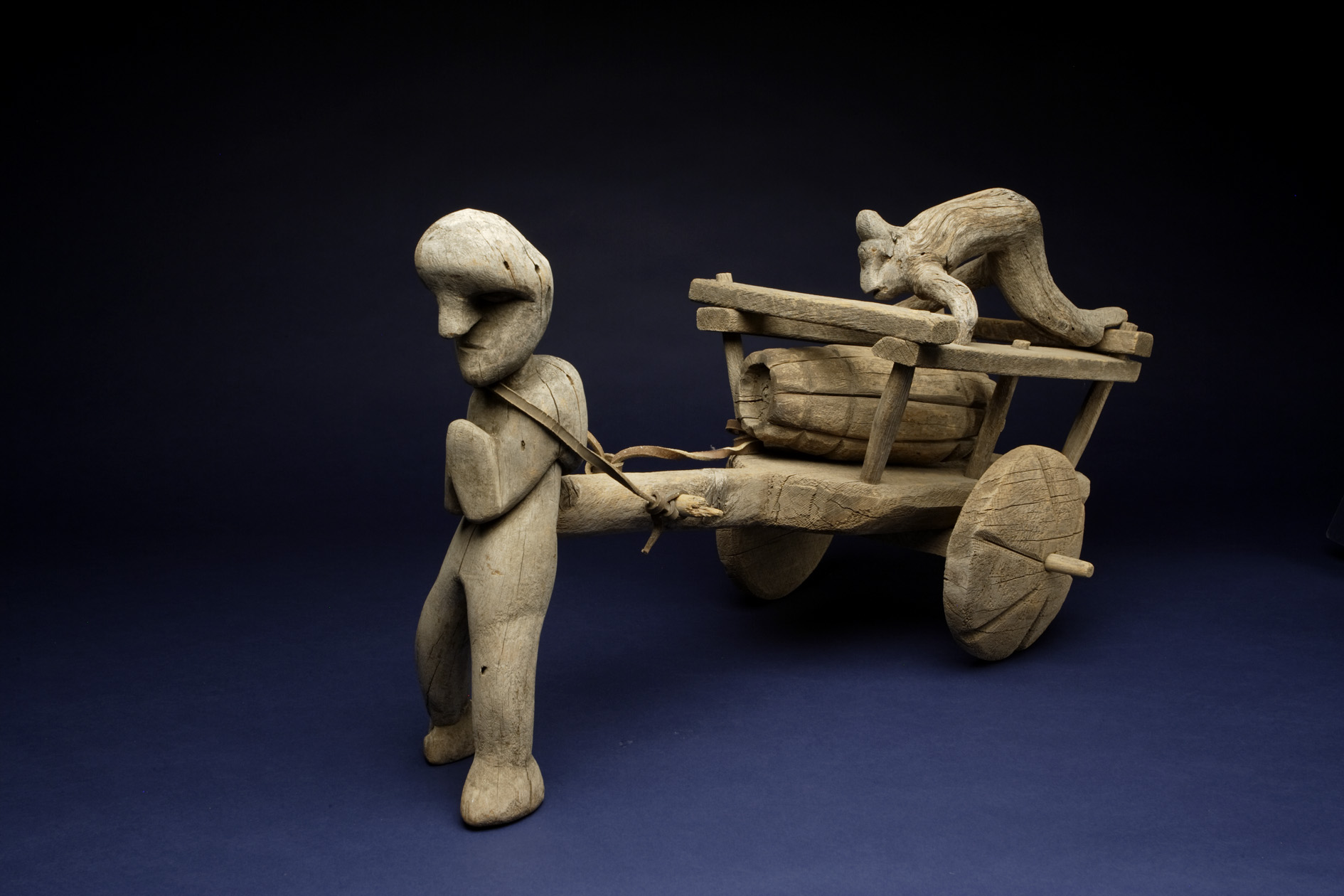With the Grain

With the Grain explores the dialogue between artists and their materials at play in the work of modern and contemporary Hispanic carvers in Northern New Mexico. Focusing on the intersection of materials, form, practice, and place it traces the relationship between wood carvers in Northern New Mexico and the distinctive way in which the aesthetics of their work was, and continues to be, informed by a relationship with their material and through a privileging of the natural qualities of the wood they worked with. This practice often allows the natural forms of unfinished pieces of wood to guide the composition of their piece, thus fostering a dialogue between artist and material that informed the finished product.
Drawing on the traditions of the early santeros such as Jose Aragon and Jose Rafael Aragon, Jose Dolores Lopez of Cordova began the local tradition of santo carving. Suggested to him that the market would have more interest in unpainted figures, he presented his work in its original unfinished state. This began a tradition that quickly split into two worlds. The Cordova carvers remained in the tradition of Lopez, while the Barela’s took a largely different approach to the material. “Their style was to work with the nature and imperfections of the wood, incorporating the twists and turns, the knots and cracks, to create unique pieces that would never be reproduced.” says Christian Waguespack, Curator of 20th Century Art. “This exhibition will offer a look at the unique was these modern and contemporary New Mexican artists works in harmony with their materials and with the natural environment.”
Patrocinio Barela was a key figure in this genre and his legacy continues to inform artists’ practices today, and is a central figure in this project, which will include over 35 of his sculptures. He gained national recognition when he was one of the few sculptors included in the Museum of Modern Art’s 1936 exhibition New Horizons in American Art. What set Barela apart from the majority of 20th century santeros was how he took the modern approach of letting his material guide his hand, using the natural forms, curves, and bumps of the wood to inform the shape of his finished sculpture. In the catalogue for New Horizons in American Art Holger Cahill, national director of the Federal Art Project of the Works Progress Administration during the New Deal, observes “there is, in general, an honest and unpretentious approach, and an acceptance of the essentially sculptural idea that this art involves a collaboration between the artist and his material.” Many of Barela’s descendants have taken up the chisel and continue to produce unpainted carvings in dialogue with their materials.
The artistic traditions of northern New Mexico are often considered to be at risk of dying out, but the contemporary section of this exhibition will show that these practices are still thriving in New Mexico. Families like the Barelas have put a lot of emphasis on the legacy passing it down to sons, grandsons, great-grandsons and daughters and even including individuals who have married into the family. While the primary contemporary carvers are from the original families, the tradition continues and inspires others. Contemporary elements are being added like new subject matter and new finishes as the works begin to find new context.
“Although it may not have been intentional, Barela created a legacy that continues to this day,” says Dr. Mark White, Executive Director. “With the Grain will offer audiences a testament to just how influential Barela remains and the vitality of northern New Mexico wood carving.”
With the Grain Panel Discussion
Press
Knotty By Nature– Santa Fe New Mexican Pasatiempo, April 21, 2023